You can set IIS6 custom headers via IIS MMC by opening a site's properties then clicking on the HTTP Headers tab:

You can also use adsutil (found in c:\InetPub\AdminScripts):
cscript adsutil set w3svc/1/root/HttpCustomHeaders "X-Served-By:Server-001"
The command above will configure the HTTP Headers for the default website.
Be careful when using adsutil as this will overwrite any existing headers already configured.
To set multiple headers do:
cscript adsutil set w3svc/1/root/HttpCustomHeaders "X-Served-By:Server-001" "X-Powered-By:ASP.NET"
Update:
With regard to accessing the response headers on the client, if you're using an ASP.NET AJAX update panel then add this script to the end of your page:
<script type="text/javascript" language="javascript">
Sys.WebForms.PageRequestManager.getInstance().add_endRequest(endPageRequest);
function endPageRequest(sender, args) {
var allHeaders = args._response._xmlHttpRequest.getAllResponseHeaders();
var headers = allHeaders.split('\n');
// At this point you have a string array of response headers.
// Or you can get an individual header:
var header = args._response._xmlHttpRequest.getResponseHeader("MyHeader");
}
</script>
This will hook into the page request manager such that when the Ajax request completes you also get visibility of the underlying XMLHttpRequest object which has a copy of the response headers.
You can do something similar with jQuery:
$.ajax({
url: "/Home/HeadTest",
success: function (data, textStatus, xhr) {
var header = xhr.getResponseHeader("MyHeader");
}
});
